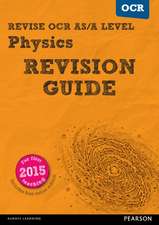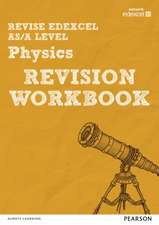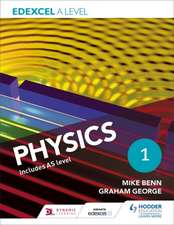Highlights of Astronomy: As Presented at the XIXth General Assembly of the IAU, 1985: International Astronomical Union Highlights, cartea 7
Editat de Jean-Pierre Swingsen Limba Engleză Hardback – 30 iun 1986
| Toate formatele și edițiile | Preț | Express |
|---|---|---|
| Paperback (1) | 1593.81 lei 38-44 zile | |
| SPRINGER NETHERLANDS – 30 iun 1986 | 1593.81 lei 38-44 zile | |
| Hardback (1) | 1851.32 lei 6-8 săpt. | |
| SPRINGER NETHERLANDS – 30 iun 1986 | 1851.32 lei 6-8 săpt. |
Preț: 1851.32 lei
Preț vechi: 2257.70 lei
-18% Nou
Puncte Express: 2777
Preț estimativ în valută:
354.26€ • 371.57$ • 294.91£
354.26€ • 371.57$ • 294.91£
Carte tipărită la comandă
Livrare economică 01-15 aprilie
Preluare comenzi: 021 569.72.76
Specificații
ISBN-13: 9789027722782
ISBN-10: 9027722781
Pagini: 912
Ilustrații: 920 p.
Dimensiuni: 155 x 235 x 48 mm
Greutate: 1.44 kg
Ediția:1986
Editura: SPRINGER NETHERLANDS
Colecția Springer
Seria International Astronomical Union Highlights
Locul publicării:Dordrecht, Netherlands
ISBN-10: 9027722781
Pagini: 912
Ilustrații: 920 p.
Dimensiuni: 155 x 235 x 48 mm
Greutate: 1.44 kg
Ediția:1986
Editura: SPRINGER NETHERLANDS
Colecția Springer
Seria International Astronomical Union Highlights
Locul publicării:Dordrecht, Netherlands
Public țintă
ResearchCuprins
Invited Discourses.- Pulsars and their Genesis.- Dark Matter in the Universe.- Venus.- Joint Discussions.- 1. Reference Frames.- Uses and Required Characteristics of Reference Frames for Galactic Astronomy.- Reference Frames for Minor Planets, Comets and Satellites.- Reference Frames and the Extragalactic Distance Scale.- Requirements for Earth Rotation Parameters.- Ephemerides and Celestial Mechanics.- Status Report on the Work on the FK5.- J2000.0.- Classical Absolute/Differential Programs.- The Background to the MERIT/COTES Recommendations on the Terrestrial and Celestial Reference Systems.- HIPPARCOS and Celestial Reference Frame.- The Use of the Hubble Space Telescope for Global Reference Frame Work.- Proper Motions Referred to Faint Galaxies.- Reference Frame Studies at JPL/ Caltech.- On the Use of Natural References.- Relativistic Reference Frames in Astrometry.- Comparison of the Optical and Radio Reference Frames.- The Promise of Optical/IR Interferometry and Space Astrometry.- Reference Frame/Coordinate System in General Relativity.- Discussions.- 2. Long-Period Eclipsing Binary Stars and Related Objects.- Photometry of the Recent Eclipse of Epsilon Aurigae.- A Spectroscopic View of Epsilon Aurigae.- Interpretation of the Data of Epsilon Aurigae.- Observation and Interpretation of Zeta Aurigae Stars.- Related Binaries, Including Symbiotic Stars.- Mass Transfer and Evolution in Long-Period Binary Systems.- Wind Accretion and Interaction in Long Period Binary Systems.- Summary and Critique of Joint Discussion II.- Extraction of the Shell Spectrum of Epsilon Aurigae.- Dynamics of the Epsilon Aurigae Ring Model.- Interim Discussion of the Orbit of ? Sagittae.- Evidence for the Roche Lobe Overflow in VV Cephei.- Infrared Michelson Interferometry of Zeta AurigaeType Supergiants.- Very Long Period Supergiant Semidetached and Contact Systems.- 3. Solar and Stellar Nonradial Oscillations.- Progress and Problems in the Study of the Pulsating White Dwarf Stars.- The PG1159 Variables.- Non-Radial Oscillations in ? Scuti Stars and Rapidly Oscillating Ap Stars.- Beta Cephei Variables.- Nonradial and Radial Oscillations Observed in Non-Emission Line OB Dwarfs and Giants.- Non-Radial Pulsation in Be Stars.- Radial and Non-Radial Pulsations in Wolf-Rayet Stars and in Supergiants.- Solar and Solar-Like Oscillations: Theory.- 4. Radio Astronomy and Cosmology.- Cosmic Microwave Background Spectrum Measurements.- The Angular Distribution of the Cosmic Background Radiation.- Ovro Results on the Sunyaev-Zel’dovich Effect, 1983–1985.- The Microwave Background from Cambridge.- Searches for Primordial Pancakes.- Intergalactic Neutral Hydrogen.- The Nature of Faint Radio Sources.- Is the Upturn in the Source Counts Caused by Primeval Radio Galaxies ?.- A New Deep VLA Radio Survey at 6 cm.- Dependence of Linear Sizes and Spectral Indices of Extended Radio Galaxies on Redshift and Radio Luminosity.- Abundances of the Very Light Elements (D, 3He, 4He and 7Li) and Primordial Nucleosynthesis.- 5. Stellar Activity: Rotation and Magnetic Fields.- Stellar Dynamo Characteristics.- Stellar Activity Cycles.- On the Rotation-Activity Connection.- Convection as a Regulator of Dynamos.- The Measurement of Stellar Photospheric Magnetic Fields.- The Dichotomy Between CO Absorptions and Ca II Emissions in the Sun and Stars: An Indirect Diagnostic for Gas Disturbed by Magnetic Fields ?.- Starspots and Plages.- A Study of Three RS CVn-type Eclipsing Binaries.- Coronal Magnetic Fields.- Properties of Stellar Magnetic Fields in Close Binaries Deduced fromNon-thermal Radio Observations.- Stellar X-ray and Radio Activities and Coronal Magnetic Field.- On Active Stars, Coronal Loops, Magnetic Braking and All That.- 6. Evolution in Young Populations in Galaxies.- The Concept of Young Populations.- Evolution of High Mass Stars.- The Dynamical Evolution of Young Clussters and Associations.- The Initial Mass Function in Young Star Clusters.- Discussion.- Structure and Evolution of Giant Molecular Clouds.- Molecular Clouds in M51 and in the Galaxy.- The Molecular Cloud Content of Spiral and Dwarf Galaxies.- Discussion.- Star Formation, Giant HII Regions and Spiral Structure.- Young Stars and Star Formation in Normal Irregular Galaxies.- Discussion.- Chemical Evolution of Galaxies.- Star Formation Bursts in Galaxies.- Discussion.- Summary.- 7. Supernovae.- Centenary of S Andromedae (SN 1885a).- Problems of Observing Nearby Galaxies Visually.- Some Possible Identification Between Chinese Guest Stars and Supernova Remnants.- Supernovae in Flocculent and Grand Design Galaxies.- Recent Optical Observations of Supernovae.- Supernovae and Stellar Mass Loss.- Models for the Early and Late Spectra of Supernovae.- NL TE-Effects in Supernovae Type II Photospheres.- Models of Type II Supernova Explosions.- Effects of Angular Momentum on Supernova Explosion and Stability of Rapidly Rotating Stellar Cores.- Gravitational Radiation by a Collapsing Rotating Stellar Core.- Phase Transitions of Superdense Matter and Supernova Explosion.- X-ray Emission from Supernova Remnants.- Supernovae and Cosmology.- VL BI Observations of the Compact Components in M82.- Radio Supernova Candidates in the M82 Starburst.- Joint Commission Meetings.- Hipparcos.- The ESA Space Astrometry Mission: Overview and Status.- Activities of the Input Catalogue Consortium.- Preparation of the Mission: Earth-based Photometry.- Preparation of the Mission: Earth-based Astrometry.- Activities of the Data Reduction Consortia.- Tycho: Photometry & Astrometry for more than 500 000 Stars.- The Tycho Input Catalogue.- Link with Extragalactic Reference Frames.- Coronal Activity and Interplanetary Disturbances.- Coronal Activity at Radio Wavelengths.- Coronal Response to Energy Release During Solar Flares.- Correlated Observations of Impulsive UV and Hard X-ray Bursts from the Solar Maximum Mission.- Coronal Mass Ejections.- The Sources of Major Heliospheric Disturbances.- The Response of Microwave Emission to the Development of Active Regions.- Coronal Holes and Flare Related Phenomena.- Coronal Structures Observed at Meter Wavelengths.- The Nançay Multifrequency Radioheliograph.- An Energy Storage Mechanism for a Solar Flare by Shearing the Magnetic Field.- Merit + Cotes.- Joint Summary Report of the IAU/IUGG Working Groups on the Rotation of the Earth and the Terrestrial Reference System.- Report of Joint Meeting Held on 1985 November 22 to consider the MERIT/COTES Recommendations for a New International Earth-rotation Service.- Synthetic Photometry.- Principles and Scope of Synthetic Photometry.- The Possibilities of Synthetic Photometry.- Passbands and Photometric Systems.- Observed Stellar Energy Distributions for Synthetic Photometry.- Theoretical Stellar Energy Distributions.- Synthetic Photometry and the Calibration of the Hubble Space Telescope.- Standard Stars.- The Microfiche of Standard Stars.- Energy Distribution, Photometry and Physical Characteristics of the Sun and Solar Analogs.- On the Absolute Energy Distributions of the Sun, of the “Solar Analogs” 16 Cyg B, 16 Cyg A, VB 64 and of Vega.- Note.- Additional Contributions.-New Radio Telescopes.- A Reconsideration of the Galactic Constants.- Author Index.
























